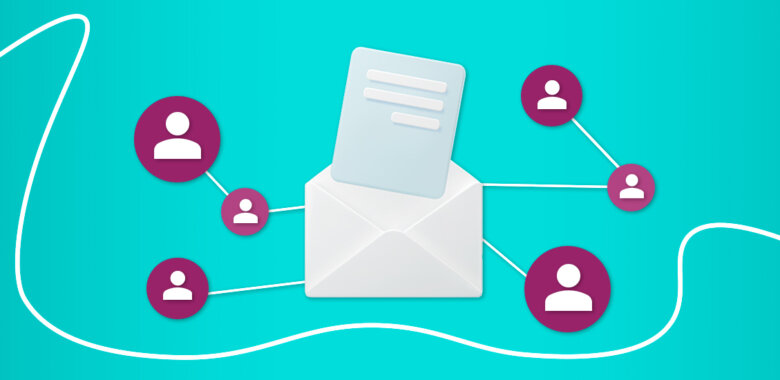Key elements of a good sales prospecting email template
A good sales email consists of a few key elements.
Killer subject line
The subject line is the first thing prospects see upon receiving a sales prospecting email. With that in mind, make sure that it is as attention-grabbing as possible without going overboard. In case you do not know where to start, have a look at our guide to writing catchy email subject lines.
Personalization and relevance
To make a sales email stand out, personalize it. For instance, you could start referring to your prospects by their names. While it is not easy to do during a large-scale prospecting operation, it is definitely worth the effort. According to recent research, personalization can drive a revenue lift that can range from 5% to 25%.
Simple language
Many people make sales emails overly complicated. Sure, you might be using your prospecting templates to reach out to high-level decision-makers and management, but it does not mean that you should make each message sound like an academic essay. In fact, you are much more likely to get your prospects to reply if you use simple language. You could also look into using a few email emojis if you feel like it!
Value
If you want your prospects to respond to sales email templates, provide them with some kind of value. That way, you can position your product or service as a reasonable and convenient way to address their pain points. For example, your email templates could include a helpful piece of advice or a link to a guide you published on your company website.
Short length
Keep in mind that each prospecting email you send out has a life expectancy of mere seconds. Your prospects are busy people and do not have the time to spend half an hour on just one prospecting email. So, be concise and get straight to the point. Once you are done, remember to check what the sales message looks like on mobile. If it is a large and hard-to-read chunk of text, it will end up in the bin.
Call-to-action
In sales operations, every single detail counts, including the call-to-action under each sales email. You do not want to leave your prospects confused as to what you expect them to do. Instead, you should make it very clear that you, for example, want them to book a discovery call. The call-to-action can help you do just that with ease and efficiency.







